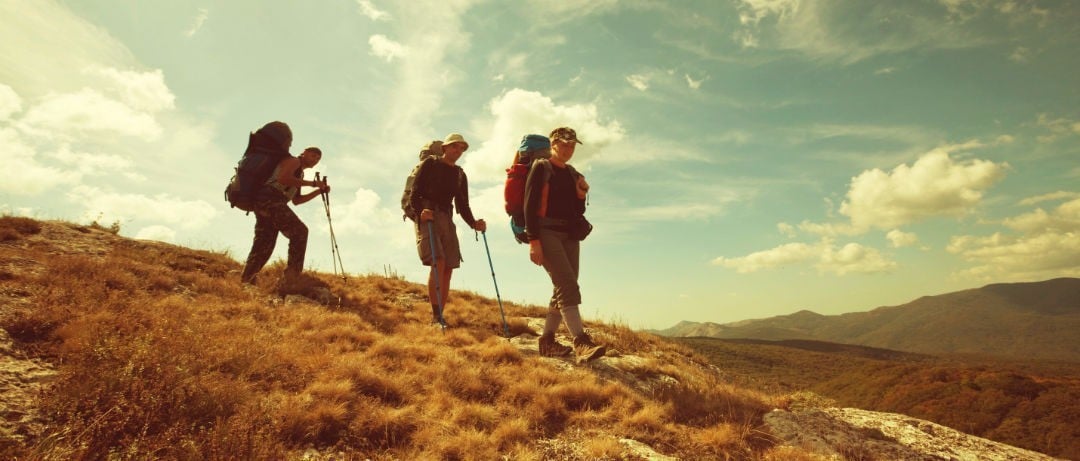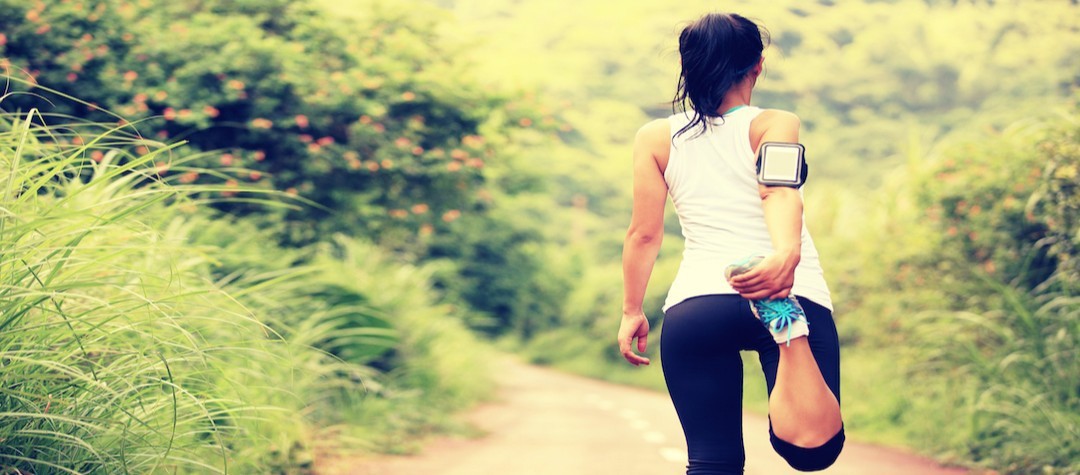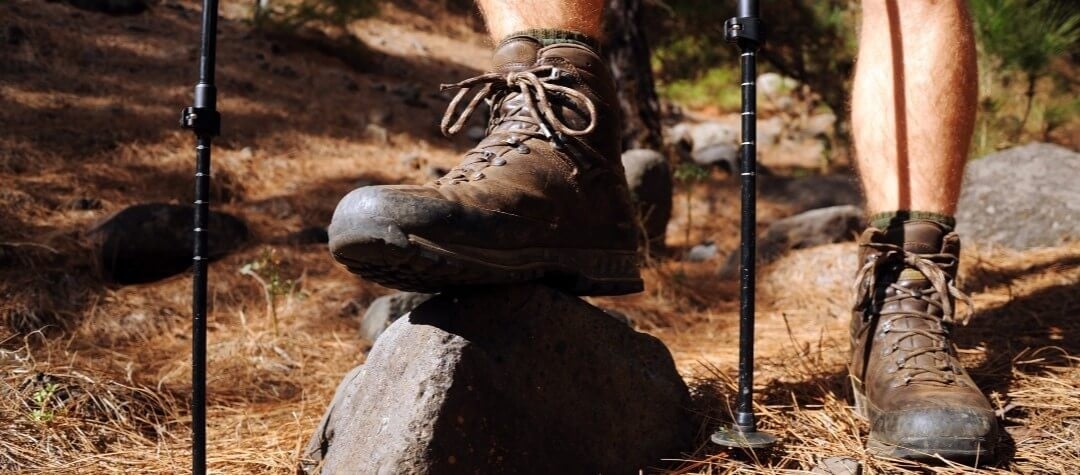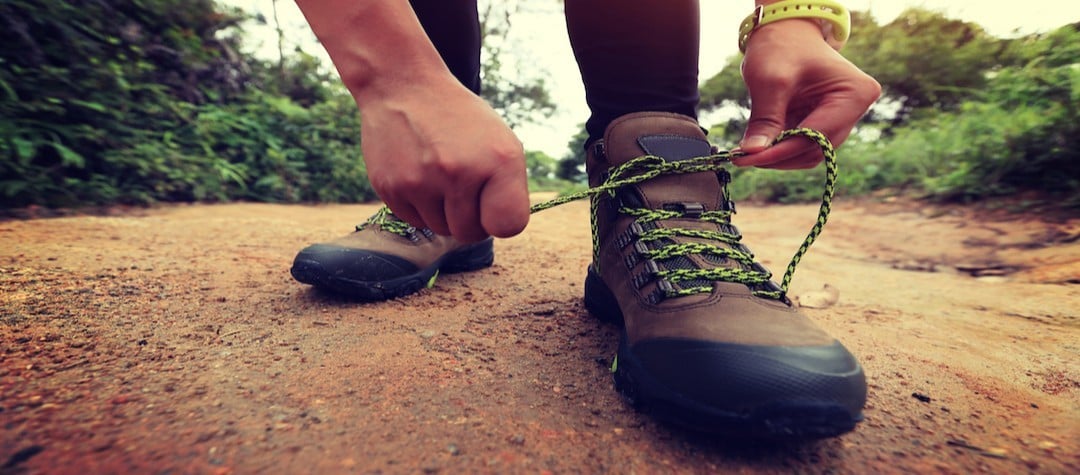If you’ve recently decided to take on a hiking challenge then check out the following top tips on how to get yourself hiking fit.
Set a walking goal
To get fit for the great outdoors you should firstly have a goal. Setting yourself a personal goal that you want to achieve will give you the motivation to start training and to keep on going. For example, you might want to walk the Inca Trail, take part in your first adventure race, or take on a local summit that you have always wanted to climb.
Once you have set your goal, try some of these ideas to stay motivated:
- Mark a date in your diary for your first big weekend walking adventure in the great outdoors and count the days off on your calendar.
- Keep a picture of your personal walking goal around you at all times. For example, you could have it displayed on your work PC or laptop as a screensaver or even on your toilet wall at home — basically anywhere where you won’t fail to see it every day! Seeing these pictures will keep your walking goal ‘alive’ and keep you motivated.
- Get a walk training partner. Having a training partner always helps in any training program. For a start, you will be able to keep each other motivated — plus it’s a lot harder to not go on a hike if someone else is expecting you to be there to train with them!
- Keep the walking momentum up. One of the hardest things about walk training is getting started! So, once you have committed to start training, don’t stop — otherwise you will lose the momentum you have built up and you will have to start again, which can be a hard mental battle.
- Walk whenever you can — for example on the way to and from work or in your lunch hour. If possible, hit the swimming pool at lunchtime and leave your car at home so that you can walk or cycle to and from work instead. The time you sit in traffic in the car could be a lot better spent getting fitter!
- Have a walk training plan. When you start your training, create a training program and include target times for runs, walks, stair climbs, swims and so on, as well as the actual times you achieve. Monitor your progress and try to better your fastest time or increase your distances as your training progresses.
Up your exercise
Next, you need to start upping the amount and intensity of your walking exercise sessions, to supplement your hill walking. Joining a local gym is an excellent way to improve your personal fitness but it is not essential. If you don’t like gyms — or if you want to supplement what you do at the gym — then try out the following activities and exercises to improve your cardiovascular and muscle fitness:
- Stair climbs. Your staircase can be a fantastic training aid! Do 20 to 30 minutes of stair climbing every day to keep your legs in shape. Stair climbing will particularly help to maintain the strength in your knees — which is essential for many outdoor walking adventures.
- Running is a great way to exercise all of your hiking muscles — and it gives your heart and lungs a good workout too! If you want to benefit from your running, then do a short 20 to 30 minute uphill run, as this will exercise your heart and muscles far more than a two-hour run over flat terrain.
- Cycling is great for your leg muscles and also provides you with an excellent cardiovascular workout. However, if you don’t like the idea of taking to the roads, then get an exercise bike for your home instead. You can pedal away in your lounge and stay hiking fit while watching TV or listening to some music!
- Swimming is an excellent exercise for fitness training, as it gives all of your muscles a workout — and it does so without giving your body the pounding involved in other exercises such as walking, running or cycling. So, grab your Speedos and goggles and head to the pool! Also, spending some time in a sauna or steam room is a great way to treat your muscles to some relaxing heat after your swim.
- Leg strength and core body strength exercises. We rely on our legs and core body strength for most outdoor activities — so make sure you focus on maintaining and improving your leg and core body strength before going walking in the outdoors. Follow the simple exercises outlined next — which you can do in front of the TV if you want to — in order to maintain your leg and core body strength. Do 3 sets of 20 repetitions for each exercise, with a one-minute break between each set.
- Squats. Stand up straight and raise both your arms in front of you so that they’re parallel to the floor. Slowly bend your legs at the knees —keeping your back straight and upright — until you reach a squat or sitting position. Make sure you don’t bend your legs any further than 90 degrees. Then, straighten your legs slowly to return to your starting or standing position. Squats will help keep your knee joints in shape and reduce the risk of knee injury when you get back out there on the hills!
- Calf raises. Stand on a step on your staircase with your toes and the balls of your feet on the step and your heels suspended off the step. Perform calf raises by slowly lowering and raising yourself on your toes to maximum extension. Calf raises really help to develop the calf muscles —and you’ll certainly feel the burn after completing three sets of this exercise.
- Sit-ups are a great way to increase your core body strength — and without good core body strength, other parts of your body will be forced to compensate, which can lead to fatigue and or or injury. To do sit-ups, lie on your back on the floor with your feet flat and knees bent, shoulder width apart. Position your fingertips next to your head just forward of your ears. Keeping your head and neck in line with your spine, lift your shoulders up from the floor by contracting your abdominals. Then lower your body to the floor under control and repeat.
Monitor your progress
A final tool to aid you in getting hill fit is to monitor your progress. Checking your progress can be a great motivational tool if you are failing to achieve your target times during your training. It can also be a great morale booster, and can be motivational too, as you will get to see the hard-earned results of all your efforts! However, it can be tough to measure improvements in your fitness levels — so why not treat yourself to a new toy? Heart rate monitors are a great way to monitor increases in your walking fitness levels and are an excellent training tool. Also, starting and maintaining an online training blog can help you to track your progress and stay motivated as well.














